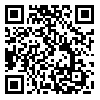Volume 8, Issue 27 (Winter 2015)
IJT 2015, 8(27): 1196-1202 |
Back to browse issues page
1- Department of Clinical Biochemistry, Isfahan University of Medical Sciences, Isfahan, Iran. , palizban@pharm.mui.ac.ir
2- Department of Clinical Biochemistry, Isfahan University of Medical Sciences, Isfahan, Iran.
3- Department of Pharmacognosy & Pharmaceutical Sciences Research Center, Isfahan University of Medical Sciences, Isfahan, Iran.
2- Department of Clinical Biochemistry, Isfahan University of Medical Sciences, Isfahan, Iran.
3- Department of Pharmacognosy & Pharmaceutical Sciences Research Center, Isfahan University of Medical Sciences, Isfahan, Iran.
Abstract: (4692 Views)
Background: Lead and cadmium are toxic heavy metals found as major contaminants in food products and edible oils. The aims of this study were to investigate the lead and cadmium contaminations in seeds and extracted oils from Brassica napus L and Carthamus tinctorius grown in the vicinity of industrial sites (Isfahan Zobe Ahan) near Isfahan province/Iran.
Methods: In this study, the seeds of B. napus and C. tinctorius were randomly sampled from the farms. The oils of seeds were provided by factory and extracted as well in our laboratory. The two series of washed and unwashed seeds digested with nitric acid and the amount of elements in seeds and oils were measured using GF-AA spectrometer equipped with Zeeman Effect.
Results: Cadmium was found in all samples below the Method Detection Limit (MDL, 0.04 μg/L). Lead contaminations were found in all seeds and oils except washed B. napus seeds. The highest levels of lead contaminations were observed in oils of C. tinctorius and B. napus with the amount of 24.74 μg/L and 11.85 μg/L, respectively. The level of lead in unwashed seed oils were significantly higher than washed seed oils (P<0.05).
Conclusions: The contamination rate of cadmium compared with lead was very low. The higher lead contaminations in unwashed seeds oils compared with washed seeds oils indicated that the contaminant should have been be transferred through the air. Although these observations suggest that the levels of contaminations in edible oils are below the toxic level, long-term exposure may lead to potential health risks.
Methods: In this study, the seeds of B. napus and C. tinctorius were randomly sampled from the farms. The oils of seeds were provided by factory and extracted as well in our laboratory. The two series of washed and unwashed seeds digested with nitric acid and the amount of elements in seeds and oils were measured using GF-AA spectrometer equipped with Zeeman Effect.
Results: Cadmium was found in all samples below the Method Detection Limit (MDL, 0.04 μg/L). Lead contaminations were found in all seeds and oils except washed B. napus seeds. The highest levels of lead contaminations were observed in oils of C. tinctorius and B. napus with the amount of 24.74 μg/L and 11.85 μg/L, respectively. The level of lead in unwashed seed oils were significantly higher than washed seed oils (P<0.05).
Conclusions: The contamination rate of cadmium compared with lead was very low. The higher lead contaminations in unwashed seeds oils compared with washed seeds oils indicated that the contaminant should have been be transferred through the air. Although these observations suggest that the levels of contaminations in edible oils are below the toxic level, long-term exposure may lead to potential health risks.
| Rights and permissions | |
 |
This work is licensed under a Creative Commons Attribution-NonCommercial 4.0 International License. |


